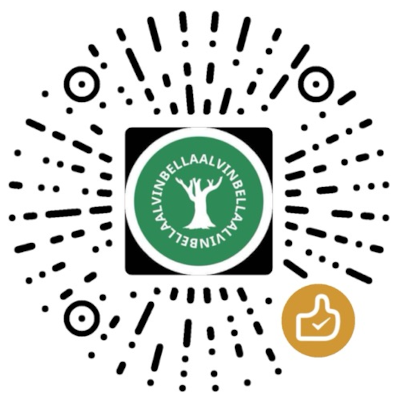Store

FreeBSD
Overview
FreeBSD is a free, open source Unix-like operating system derived from BSD (Berkeley Software Distribution). It is known for its high performance, stability, security and flexibility and is widely used in servers, embedded systems and desktop environments. FreeBSD is maintained by the FreeBSD project and provides a complete operating system, including kernel, drivers, user space tools and documentation. It supports multiple architectures (x86_64, ARM64, RISC-V, PowerPC, etc.) and is known for its powerful ZFS file system, Jails (containerization technology) and Ports system (package management). FreeBSD drives world-renowned services such as Netflix, WhatsApp and PlayStation Network.
History and Development
- Origin:
- FreeBSD originated from Berkeley Unix (BSD) in the 1970s and was developed by the University of California, Berkeley. FreeBSD 1.0 was officially released in 1993, based on 4.3BSD and 386BSD.
- The goal is to provide a high-performance, stable Unix-like system, different from Linux's GPL-driven development.
- Development history:
- 1993-2000: FreeBSD 2.0 introduced the Ports system, 3.0 supported 64-bit architecture, and laid the foundation for servers.
- 2005-2010: FreeBSD 6.0 introduced ZFS support, 7.0 optimized SMP (multi-core processing), and Netflix began to adopt it.
- 2014-2020: FreeBSD 10.0 introduced Bhyve (virtualization), Jails enhancement, 12.0 supports ARM64 and RISC-V.
- 2021-2025: FreeBSD 14.1 (June 2024) optimizes ZFS, Wi-Fi 6 and Rust support, and 14.2 (expected in 2025) continues to improve.
- X post says "FreeBSD 14.1's ZFS and Jails are unmatched".
- Community and Support:
- Maintained by the FreeBSD Foundation (non-profit organization) and the community, hosted at freebsd.org and GitHub.
- Provides a detailed FreeBSD Handbook (docs.freebsd.org), forums, mailing lists, and X communities (such as @FreeBSD).
- Long-term support (about 5 years per version, 14.1 to 2029).
- Open Source License:
- Adopts the BSD license (2-Clause and 3-Clause), allowing free use, modification and distribution without mandatory open source derivative works.
Main features
FreeBSD is known for its stability, security and unique features, and is suitable for servers and development environments. The following are its main features:
- ZFS file system
- Supports snapshots, compression, deduplication and RAID-Z, similar to Garuda Linux's BTRFS.
- Back up the system through zfs snapshot and restore misoperation.
- Jails containerization
- Lightweight container technology, isolates applications and services, lighter than Docker.
- Ports and Pkg package management
- Ports system:
- Provides 30,000+ software packages, compiled from source code, and flexible customization.
- Pkg system:
- Precompiled binary packages, similar to Linux's dnf or pacman.
- Ports system:
- Desktop and server support
- Desktop environment:
- Supports XFCE (default lightweight), GNOME, KDE Plasma, MATE, etc.
- Server:
- No GUI by default, suitable for running Apache, Nginx.
- Support Bhyve virtualization, similar to VirtualBox.
- Desktop environment:
- Security and Network
- Security:
- Provide PF firewall (Packet Filter), OpenSSL and Capsicum (sandbox mechanism).
- Network:
- Support Wi-Fi 6, TCP optimization.
- Security:
Advantages and limitations
Advantages
- Stability:
- Long-term support (5 years).
- X post said "FreeBSD's stability is far beyond Linux".
- ZFS and Jails:
- ZFS snapshots and Jails provide advanced data protection and isolation, better than Garuda's BTRFS.
- BSD license:
- More relaxed than GPL, suitable for commercial and open source projects.
- High performance:
- Optimize the kernel and network stack, Netflix uses FreeBSD to provide 90% of streaming media.
- Rich documentation:
- FreeBSD Handbook and forums provide detailed instructions (refer to docs.freebsd.org).
Limitations
- Learning curve:
- FreeBSD configuration (such as Ports, Jails) is more complicated than Linux, and you need to be familiar with BSD commands.
- Solution: Refer to the Chinese manual at docs.freebsd.org/zh-cn.
- Software ecosystem:
- Ports/Pkg software is less than Linux (30,000 vs Arch's 80,000+).
- Solution: Use Pkg to install, or run Linux containers through Jails.
- Hardware compatibility:
- Driver support is not as good as Linux, Wi-Fi and GPU drivers may need to be manually configured.
- Community size:
- Smaller than Ubuntu, fewer resources.
- Solution: Combine the FreeBSD Handbook with X tutorials (such as @FreeBSD).
Summary
FreeBSD is a free, open source Unix-like operating system that features ZFS, Jails, Ports, and a BSD license, suitable for servers, embedded systems, and desktop environments. It provides high performance and stability, driving services such as Netflix and WhatsApp. FreeBSD is more suitable for server deployments that pursue stability and security.


 Redox OS
Redox OS
 OpenBSD
OpenBSD
 NetBSD
NetBSD
 GhostBSD
GhostBSD
 DragonFly BSD
DragonFly BSD





